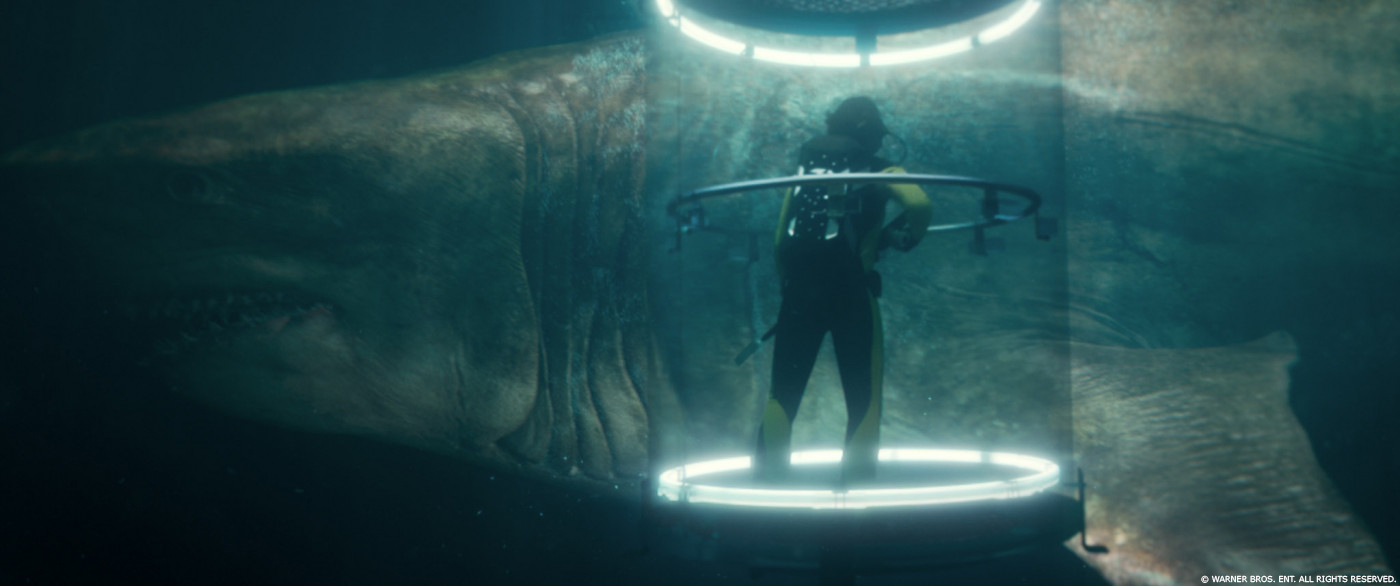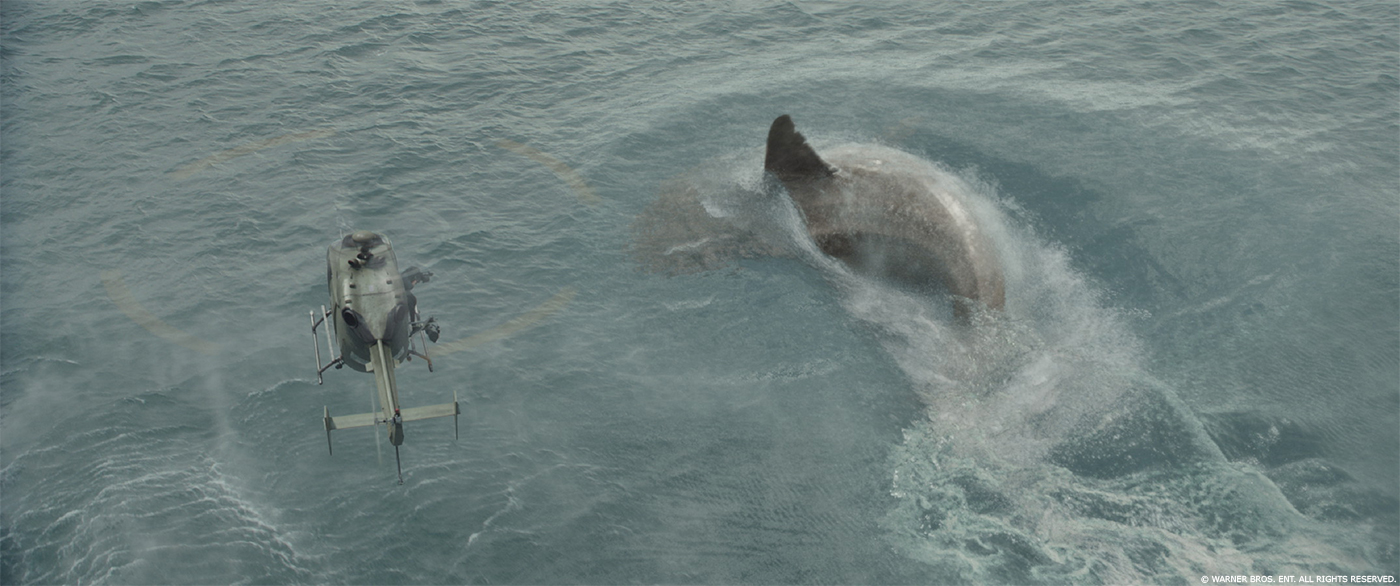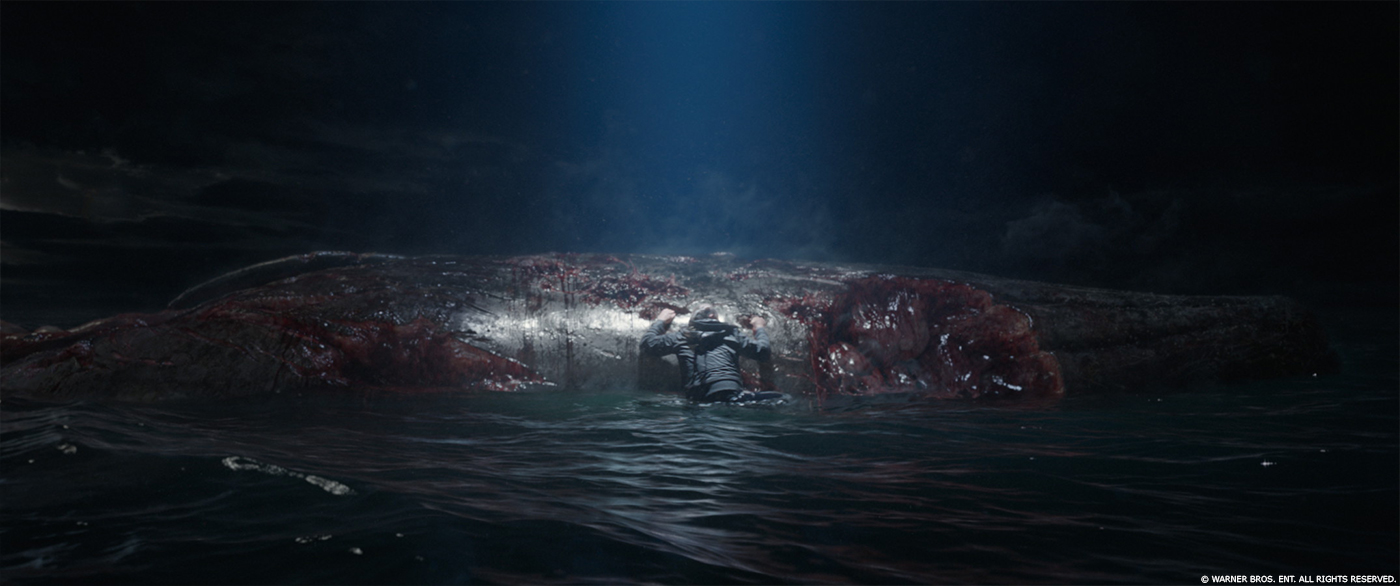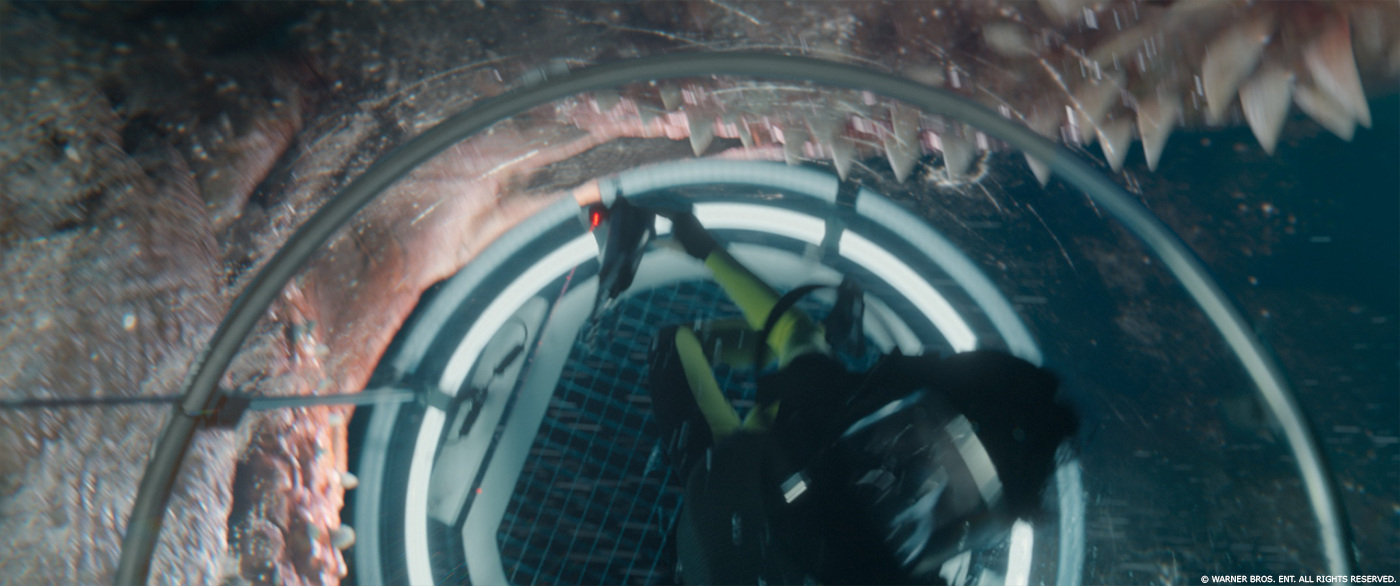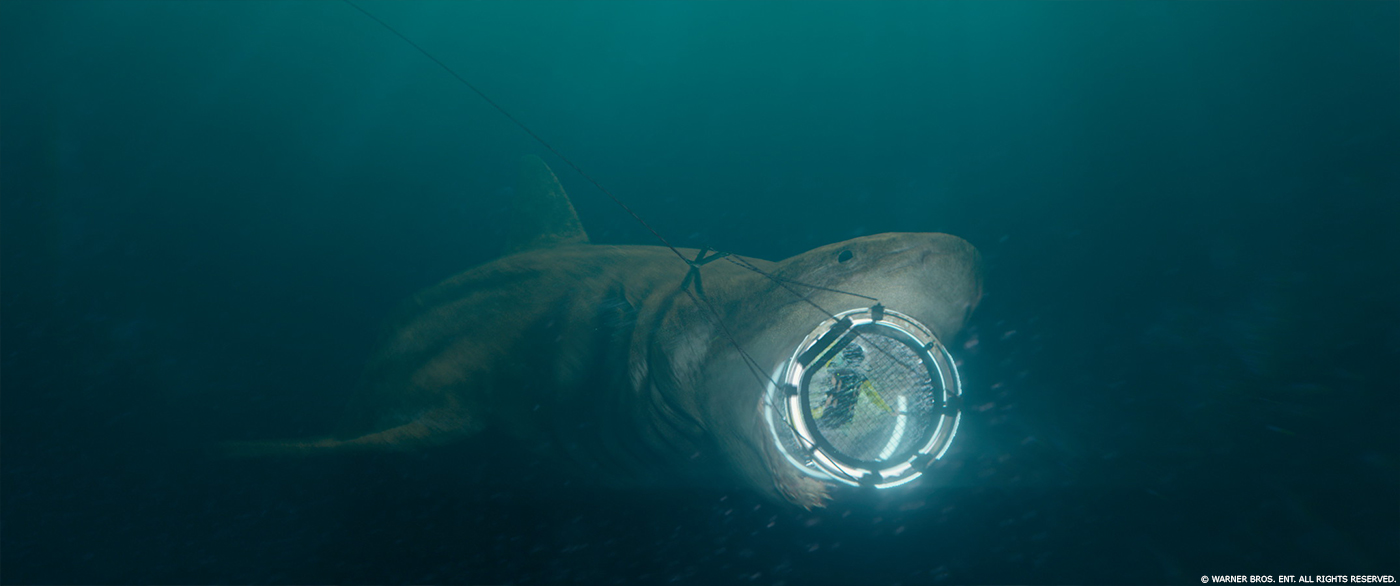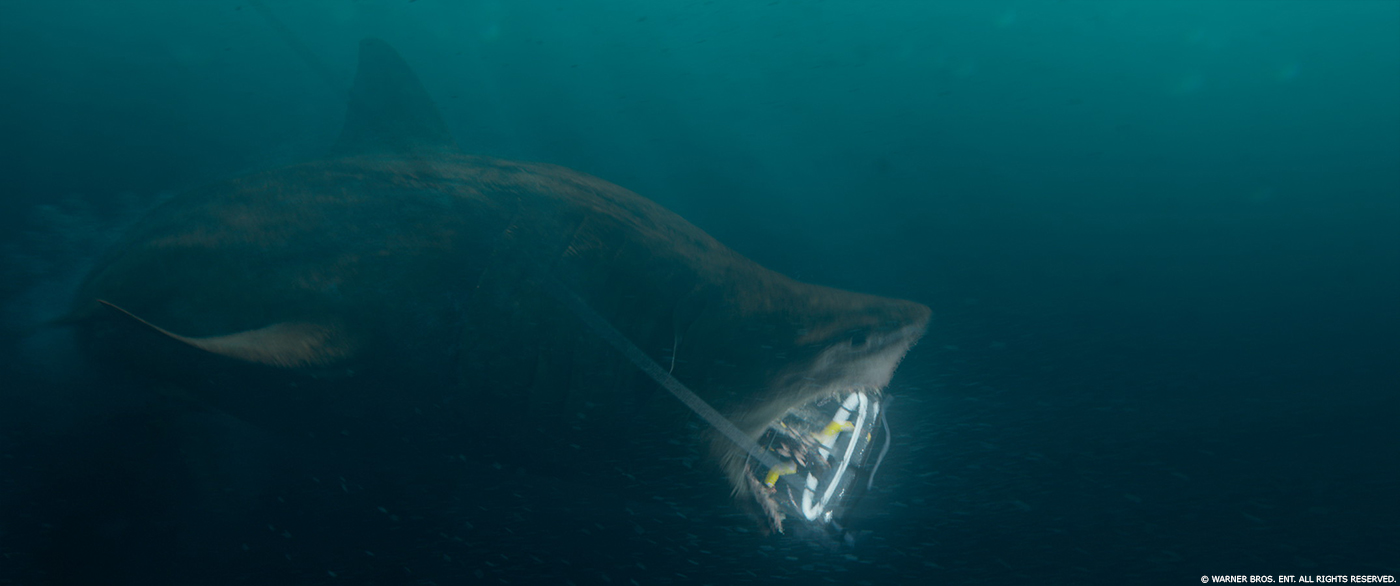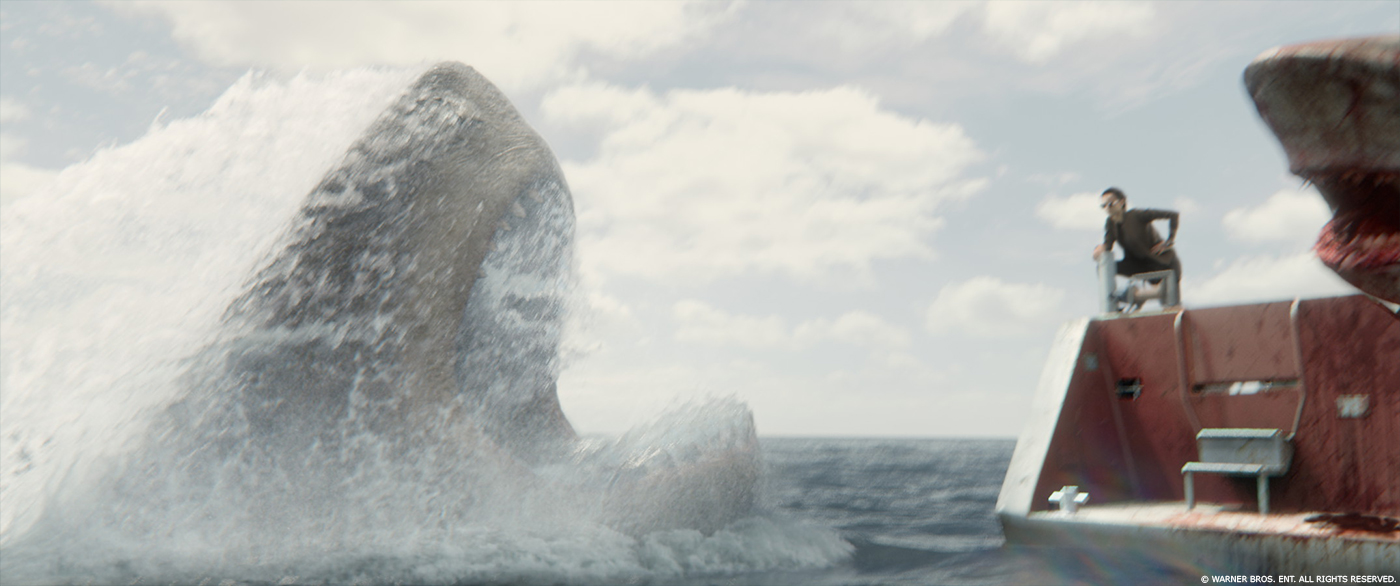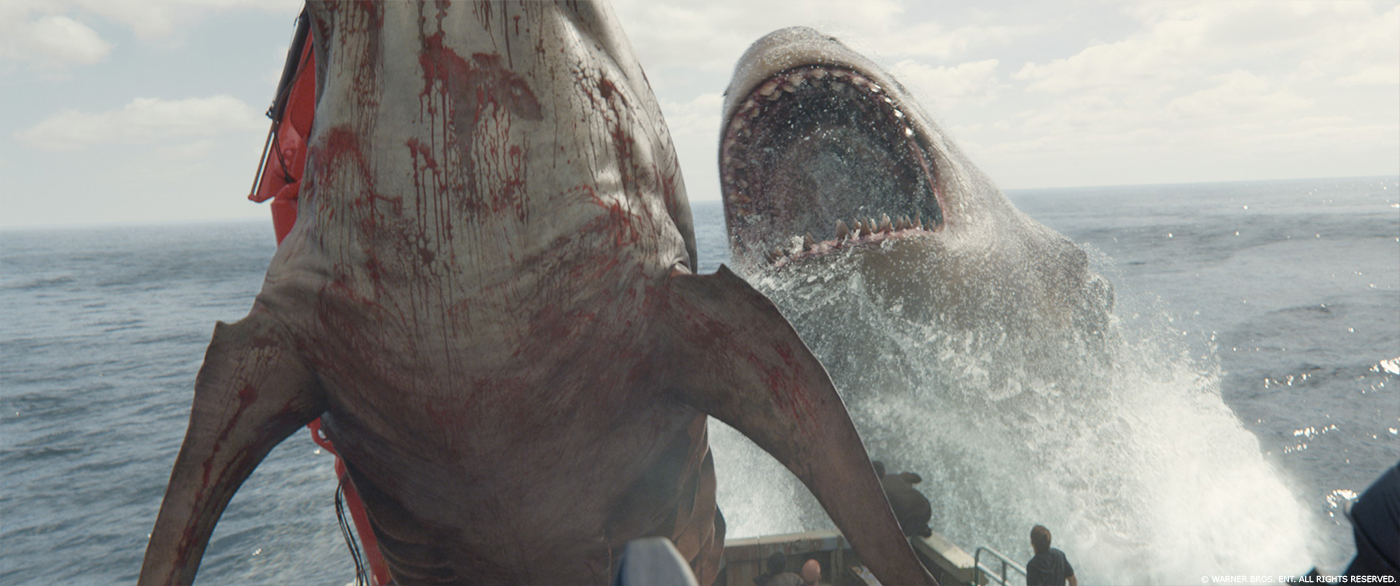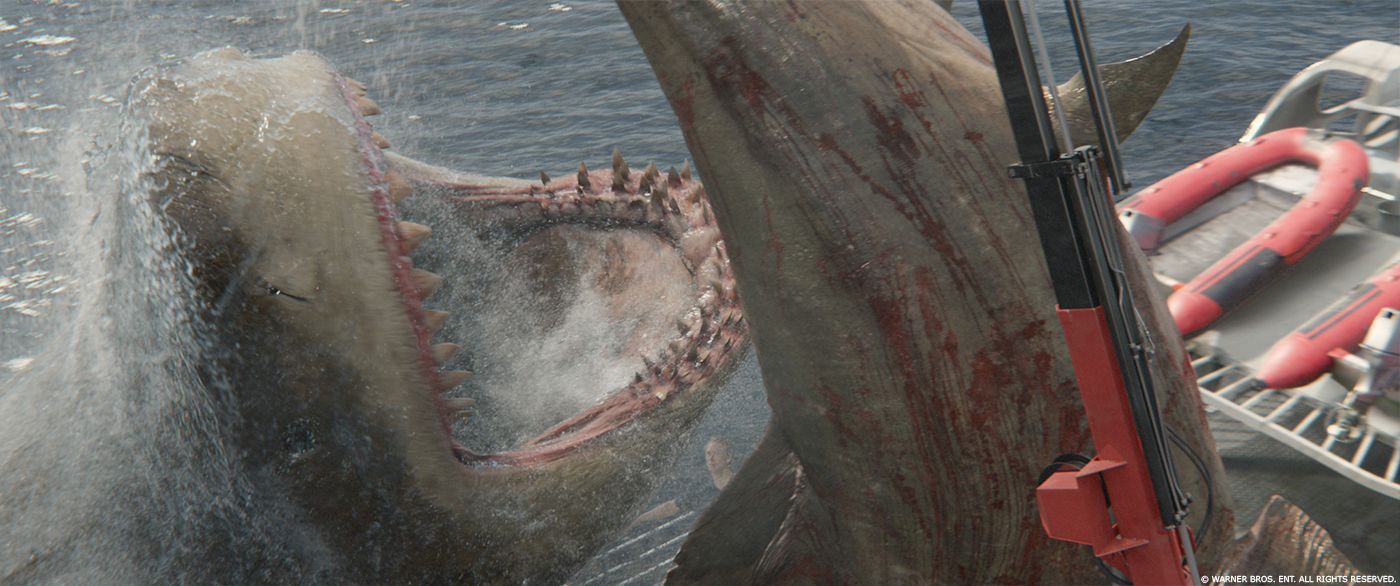Mohsen Mousavi began his visual effects career more than 13 years ago. He worked at Pixomondo from 2005 to 2012 on films such as NINJA ASSASSIN, 2012, HUGO and RED TAILS. He then joins Scanline VFX in 2012 and works on 300: RISE OF AN EMPIRE. He then takes care of the effects on POMPEII, SAN ANDREAS and INDEPENDENCE DAY: RESURGENCE.
How did you and Scanline VFX get involved on this show?
Scanline has been involved and instrumental with the development of the THE MEG for the past 10 years! On THE MEG, we were first approached by producer Belle Avery about 10 years ago, so it’s been a long haul. But it’s great to see it get made! In addition to creating almost 500 shots — including big action moments with the shark — as the main vendor, we were also tasked to lead the development of the Megalodon itself.
How was the collaboration with director Jon Turteltaub and VFX Supervisor Adrian de Wet?
I was on set in New Zealand for about 3.5 months, supervising our shots alongside overall VFX Supervisor Adrian de Wet. Sometimes I was on the main unit with Adrian, and sometimes I was on my own with the 2nd unit out on the ocean.
There was a great deal of trust between Jon and Adrian, which made it all a great experience. They were both extremely VFX aware and accommodating. Jon had a great style of shooting a scene. He knew what he wanted and Adrian did a fantastic job planning it all in advance. We developed the Meg itself in parallel to the shoot. I would have session with my team back in Vancouver and present the iterations to Adrian directly in between the takes.
What was his approach and expectations about the visual effects?
THE MEG is a VFX driven film and every shot had to be planned in advance and we needed to be very careful about every scene and make sure that down the road we could accomplish the shots in the post. They were both very approachable and fully aware that one of the main cast, the Meg itself, is going to be put into the shots in the post alongside of some very complex cg water extension and replacement.
How did you organize the work with your VFX Producer and at Scanline VFX?
Paul Kolsanoff was Scanline’s VFX producer. He has a lot of on-set production experience and was very instrumental in helping facility Scanline’s work on set during the shoot and at the same time managing the team back in Vancouver. I was focusing fully on the creative and technical aspect and challenges of the project and he was fully on board with the schedule, client expectations, and resource dependency to get it all done on time.
What are the sequences made by Scanline VFX?
We had a variety of different exciting and challenging sequences. We worked on the opening sequence of the deep ocean rescue mission involving lots of full CG shots. We also did the tagging sequence in which Jason swims away from the boat and tries to place a tracker on the Meg, and then a spectacular chase sequence follows, ending with a massive breach of the Meg. Following that, Suyin (BingBing Li) gets into the water using a shark cage to shoot the Meg with a poison dart. This sequence changed a lot after the shoot. The shark cage was shot in a large tank in New Zealand with walls covered in blue with very limited degree of motion. The Meg grabs the shark cage and tries to swallow it while swimming really fast and pulls the boat with it. This was a very challenging sequence in terms of choreography and animation.
After this sequence you see the Baby Meg hanging on the boat, and as we all think the Meg is dead, suddenly the mother Meg breaches out of the water, onto the boat, grabs the baby Meg, slides into the water and causes the boat to capsize. Another very complex sequence of fully dynamic creature with muscle dynamics and CG water interaction, leading into death of Heller and an escape sequence as two zodiac boats race toward the Mana One platform.
Later in a night sequence, Morris (Rainn Wilson) tries to blow up the Meg in the middle of the ocean using some depth charges, only to find out that they killed a whale instead of the Meg; and while he is in the water hanging on the dead whale, he gets attacked and killed by The Meg! In this sequence the water and the whale are full CG with some very close-up interaction of Meg. One of my favourite parts of the movie!
Our last sequence was the Sanya Bay sequence in which the Meg approaches the beach, collects some swimming platforms, and attacks them in a very suspenseful beat. Those swimming platforms attacking shots were some of the most complex live action CG interaction in the film. We had some very intense stunt rehearsing on set and I must say it all worked really well in the post to combine that with digital water, digital crowds, and The Meg.
How did you work with the art department to design this giant creature?
We received some early concept from the art department as a starting point. Jon wanted us to explore more and come up with a design that is somehow familiar but at the same time has a prehistoric look. Jon did not want the Meg to look like a great white shark. He wanted to make sure when you see that on screen, you are not mistaking that with a regular shark. The broad strokes proportion was based on a great white but we did a lot of tweaks to give it its own personality and character. A great white has a very goofy face front on and we made sure we tweaked the facial features enough to stay away from that and created a more dangerous looking creature to help the narrative of the film.
Early on we decided to do the design of the Meg fully in 3d space and every iteration was sculpted in Zbrush to make sure we could look at it from all the angles as well as different lenses and take everything into account. We even developed an entire new real-time, standalone turntable system based on Unreal Engine to give Adrian and Jon an option of looking at the Meg from any perspective and have them change the lens on the fly. The overall palette of the Meg was based on different shark species and in particular the nurse shark. Another component to drive the Meg away from a great white shark look. We spent a lot of time figuring out the scale of the fine detail on the skin. Large enough to get interesting highlights and small enough to sell the scale of the Meg.
How did you handle the rigging and the animation?
Creature development has two sides. There is the creative process and there is the technical development, and a lot of complex engineering needs to happen under the hood to make everything look right. In order to hit all the beats, we need to accurately construct a functional anatomy. We need to cover the full range of bio mechanical aspect of the creature. There are very complex rule sets that needs to be dialed in to create a harmony between various different levels of layers involved. Bones relations trigger contraction and flexing of the muscles which are all wrapped and hold together with a layer of facia driving the tissue and ultimately the skin itself. Previously you would rely on the artists to almost manually control and trigger most of the dynamics per hand and that over and over on various different shots. It is time consuming, it is labor intensive, and it reduces the amount of iteration you can do per shot which is the last thing you need with today’s VFX schedules and demands.
We knew right from the get go that underlying bio-mechanical aspect of the Meg will play the most important role on creating a believable creature. We tried various different common methodologies and pretty much all solutions required tremendous amount of TD work and would involve a lot of guess work to get the right look. When we learned about Ziva, it was in its early stage but seemed to have a lot of potential. At Scanline, we truly understand the value of crafting the artistry with the science of simulation and when it comes to creature development, Ziva is the only solution out there that is based on physically accurate simulation. So we got in touch and started a very close collaboration. Ziva engine takes a way a lot of that manual labor and provides a framework that helps you set up all these relations in a fraction of time and let the computer do the heavy lifting for you.
Can you tell us more about the animation challenge with a creature that is so big?
We all have seen footage of a great white shark. Even if you are not interested in sharks and you are not watching Shark Week, you have seen enough to know sub-consciously if something is wrong and if what you see does not deform or move correctly. Human eyes are trained to react to all these subtle nuances. The closest living creature to Megalodon we know today is the great white shark. We needed to accurately build a functional structure that mimicked that but was put into a 75 ft. creature. We needed to give the right weight and mass to illustrate the size of the Megalodon. We referred to Megalodon as a big living soft balloon. On every sharp turn you needed to see the ripples that would travel through the body. On every breach you needed the deformation of the body to remind the audience how big the Meg is. It helped tremendously with selling the scale and believability of the creature.
How does the underwater lighting affect your work?
Every time we approach a project involving digital water, Scanline tries to push the boundaries and develop the technology to the next level. On THE MEG we wanted to get away from the traditional underwater shot workflow in which you would render some utility passes such as zdepth and deep layers and would try to mimic the murkiness and diffusion in comp. We came up with a physically accurate lighting model that would simulate volume distortion and diffusion under water during render times with depth dependency. Back in New Zealand, the production shot a few of shots involving the shark cage underwater in the middle of ocean as a reference and our challenge was to match that. We got to the point where our raw render looked almost the same as the real footage. I remember showing a side by side to the second unit director and DOP on set and they could not tell the difference!
Can you explain in detail about the water simulations and interactions?
We had a wide variety of digital water. 90% of the shots in the film in which the characters stand on the main boat were shot on a tank in New Zealand. The pool included half the boat as a set piece which was sitting on a massive hydraulic arm accompanied by two baggers on the each side functioning as wave machines. The pool base and walls were covered in blue which gave it that deep ocean look. The original idea was to extend the practical pool but unfortunately it looked very different from shot to shot and the pre-roll duration on the wave machine was very inconsistent. Being very comfortable with digital water, early on we made the decision to entirely replace the practical water with CG water and only keep the actor interaction where they were swimming in the water. This gave us perfect continuity and control in post.
To develop the setup for the Meg interaction, we took a real 4k high speed footage of a great white shark breaching out of the water and made it our mission to match it one to one. We tracked the footage and the real shark, scaled the Meg down to the size of the great white shark and worked on the CG water interaction. Once we had a close match, we scaled up the Meg back to its 75 feet scale and reran the sim, this time at the right scale. It worked very well and helped us push everything to get a photoreal interaction at the massive scale of the Meg.
How did you created the various vehicles and digi-doubles?
As mentioned before, only half of the boat was built as a set piece and was driven by a hydraulic arm. We did a very accurate lidar of the boat and built the model based on that and extended the rest. Second unit shot a few shots using the full scale boat on the ocean which added to the challenge as we were cutting between the real boat and the CG boat on some very close up angles. I have seen the film twice and can’t tell which one is which!
For Scanline’s sequences, we built digi-doubles of the Suyin, “The Wall,” and Morris, which were relevant to our shots. As with the boat, they were modeled based on the lidar.
Can you talk about the shooting of the beach attack sequence and your work on it?
Everything involving the swimming platform sequence, above and underwater, were shot in New Zealand in the surface tank with a limited amount of extras and the rest were shot on water in Sanya Bay beach in China.
For everything that was shot in the pool, we kept as much of the extras and water interaction as we could, and replaced/extended the water where needed. The plates had very inconsistent amount of crowds from shot to shot. We had to extend the crowd digitally in every shot. Some very FG Crowd extension including their CG water interaction. It flows very well in the movie and you don’t really realize that the sequence was shot on entirely 2 different location with 2 different methodologies.
The action sequence with the platforms needed weeks of stunt rehearsal and planning. The under water chains of the platforms get stuck on the Meg’s fin. Meg swims and pulls the platforms against each other and sort of collects them all in one spot for a brutal breach!
We built the platform on a flexible rig that could be pulled from one end of the pool to the other and crashing into the next platform. Some of the platform shots involving the Meg breach included over 200 highly choreographed stunt actors and took days to shoot. In the post, it was quite a challenge to sandwich the Meg in the middle with all that practical water interaction. As usual, we kept as much as possible and replaced the rest with CG water.
Which sequence or shot was the most complicated to created and why?
When the Meg breaches out of the water on the boat to grab the dead baby Meg and causes the boat to capsize. We have the Meg in its full glory close to the camera in bright day light with its extremely flexible muscle dynamics breaching out of the water, interacting with the boat and the characters. Everything had to be perfect. Everything had to work together to achieve a cohesive sequence that is as real as it can get to keep the audience in the moment. No practical water element was used. On set we tried to use the hydraulic arm to give a dynamic reaction to the set boat but unfortunately it was not fast enough to do the right thing. We ended up rotoing the actors off the plate and replace the boat with the fully CG boat and track the actors back on top which helped a lot to get the weight and beats of the sequence correctly. I remember when we sent our proposed final of the iconic shot of the Meg landing on the boat to Adrian, he said “Guys, this is art! “
What is your favorite shot or sequence?
I was happy with just about everything we pulled off but if I had to choose a few I would go for the dead whale sequence as well as the The Meg breach on the boat.
What was the main challenge on this show and how did you achieve it?
These days, the biggest challenge is to cope with the growing demands of having higher quality at a faster turn around. The name of the game is efficiency. Visual effects is a highly creative process. We are the creative toolsets of the film makers and trough the iterations we help shape the story and bring their vision to life. In regards to Meg, we needed to portray some very complex choreography action sequences that required a lot of back and forth with the director. We established a robust animation/simulation pipeline to be able to have fast iteration with Adrian and Jon and to meet the deadline as smooth as possible.
Is there anything specific that gave you some really short nights?
Yeah, excitement of what we can pull off the next morning!
What is your best memory on this show?
The best memory is to work with a group of outstanding artist, TDs and production member. It is like you get to conduct the Berlin Symphony Orchestra with artists from all around the world and with different backgrounds, cultures, and experience. You get to drive them towards one goal! You get to take a clean canvas and guide hundreds of different brushes and colors at the same time to create harmony and synergy! As challenging as it gets, it remains a very rewarding process!
How long have you worked on this show?
We were involved on Meg for about 19 months including 3.5 month of set supervision in New Zealand on our sequences.
What’s the VFX shots count?
We processed over 700 shots, some of which got omitted from the film at various different stages. The final count of our shots as they are in the movie is 482 shots.
What was the size of your team?
Over 250 artists worked on THE MEG at Scanline across both our Vancouver and Munich offices.
What is your next project?
Right now, I am supervising Scanline’s work on the upcoming final season of GAME OF THRONES.
A big thanks for your time.
// WANT TO KNOW MORE?
Scanline VFX: Official website of Scanline VFX.
© Vincent Frei – The Art of VFX – 2018


